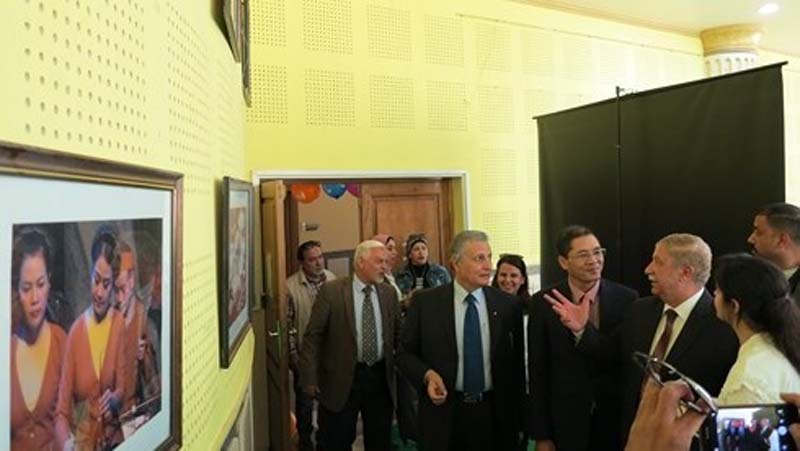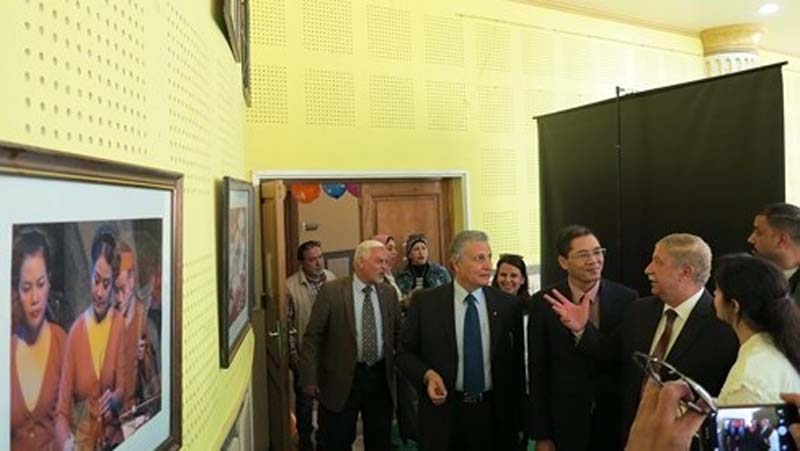
The Vietnamese Embassy in Egypt organised the programme ‘Vietnam Cultural Day’ in Ismailia province, Egypt on April 2, as part of activities to mark the 55th anniversary of Vietnam – Egypt diplomatic ties.
The event attracts a large number of local visitors
The event was attended by Ismailia
province governor Yassin Taher, Director of the Egyptian Public Library
Development Fund Reda El-Taify, and a large number of local visitors.
Documents, books, and photos on Vietnamese
culture, history, landscapes, and handicrafts were showcased at the event.
During the cultural day, the Embassy of
Vietnam launched a reading room named "A Window to Vietnam”
at the Ismailia Public Library to facilitate access to information on Vietnam.
Visitors were able to enjoy a dance with
conical hats performed by Vietnamese students in Egypt, and were given a taste of
Vietnamese traditional food and coffee.
Vietnamese Ambassador to Egypt Do Hoang Long
highlighted the economic potential of the Egyptian province, particularly in
agriculture.
He voiced his hope that similar events will be
held in other Egyptian provinces, to provide more information on Vietnamese
culture for the Egyptian people.
Later that day, the Vietnamese diplomat had a
working session with Ismailia
province governor Yassin Taher on cooperation between the province and
Vietnamese localities.
He detailed Vietnam’s socio-economic situation
and highlighted the potential for cooperation between the two nations.
For his part, Taher suggested that the two
sides promote links between Ismailia
province and Vietnamese localities, particularly in trade, investment, and
agriculture.
Source: NDO
The People’s Committee of Lac Son district held a ceremony on April 28 to receive the provincial relic certificate for the ancient rock carving site at Suoi Co stream, located in My Thanh commune.
A special music show titled "The country is in the fullness of joy” has been held at Hoa Binh Square in Hoa Binh city in celebration of the 50th anniversary of the liberation of the South and national reunification (April 30, 1975–2025).
The People's Committee of Lo Son commune, Tan Lac district, has organised the local annual traditional stream fishing festival on April 19 - 20.
As a land deeply intertwined with human history and Vietnam’s millennia-long journey of nation-building and defence, Hoa Binh is often revered for its epic tales and legends.
Residents of Hoa Binh boast a rich cultural identity, reflected in their unique language, traditional attire, customs, and folk melodies – described as "sweet as honey, clear as a mountain stream.”
Lac Son district’s Vu ban town held the 2025 Truong Kha temple festival on April 12–13 (the 15th–16th days of the third lunar month). Since its revival in 2019, the festival has been organised every three years, preserving valuable intangible heritage while meeting the community’s cultural and spiritual needs.



